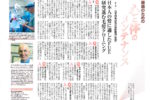Q: I had an FUE hair transplant three weeks ago and some of my existing non-transplanted hair has fallen out. I was a Norwood 3V, but now I look more like a 4 or 5 without the hair that used to help cover up my thinning area. Am I destined to look balder for the next few months? When can I expect to look like before? — T.M., New Haven, CT
A: You are describing shedding that is pretty typical following a hair transplant. The hair which is shed generally grows back together with the transplanted hair beginning at about three months. You should expect hair that is shaved for the FUE procedure to grow back right away at the normal rate of 1/2mm per day.
The shedding (also called shock hair loss) doesn’t mean permanent damage to the hair follicles. What it refers to is a physiological, or normal, response to trauma to the scalp which is caused by the hair restoration procedure. In general, only miniaturized hair (the hair that is affected by androgens and that has begun to decrease in diameter) is shed after a transplant. This hair would be lost in the near term anyway. Existing healthy hair is unlikely to shed, but if it were to shed, you could expect it to grow back as the transplanted hair grows in.


 Dr. Bernstein presented results of his study, “Robotic Follicular Unit Graft Selection,” at the 2016 ISHRS World Congress held in Las Vegas, Nevada. Graft selection is a key advance in the ARTAS Robotic Hair Transplant System, a hardware and software suite that automates aspects of the Follicular Unit Extraction (FUE) hair transplant procedure. The enhancement makes Robotic FUE more efficient and improves patient outcomes.
Dr. Bernstein presented results of his study, “Robotic Follicular Unit Graft Selection,” at the 2016 ISHRS World Congress held in Las Vegas, Nevada. Graft selection is a key advance in the ARTAS Robotic Hair Transplant System, a hardware and software suite that automates aspects of the Follicular Unit Extraction (FUE) hair transplant procedure. The enhancement makes Robotic FUE more efficient and improves patient outcomes. Dr. Bernstein was featured in a wide-ranging interview published in the New York City-based, Japanese language magazine NY Japion. Among the topics discussed were the differences between FUT and FUE hair transplants, updates on robotic hair transplant technology, the type of procedure most beneficial for Asian patients, criteria that determine candidacy for a hair transplant, and more.
Dr. Bernstein was featured in a wide-ranging interview published in the New York City-based, Japanese language magazine NY Japion. Among the topics discussed were the differences between FUT and FUE hair transplants, updates on robotic hair transplant technology, the type of procedure most beneficial for Asian patients, criteria that determine candidacy for a hair transplant, and more. Robert M. Bernstein, MD, MBA, FAAD, FISHRS, a Clinical Professor of Dermatology at Columbia University in New York and distinguished pioneer of modern hair transplant surgery, was included for the seventeenth consecutive time in the ‘Best Doctors’ edition of New York Magazine. Dr. Bernstein was selected by his peers as one of New York’s top doctors on account of his prominent work in developing Follicular Unit Transplantation (FUT), Follicular Unit Extraction (FUE), and Robotic Hair Transplantation (Robotic FUE).
Robert M. Bernstein, MD, MBA, FAAD, FISHRS, a Clinical Professor of Dermatology at Columbia University in New York and distinguished pioneer of modern hair transplant surgery, was included for the seventeenth consecutive time in the ‘Best Doctors’ edition of New York Magazine. Dr. Bernstein was selected by his peers as one of New York’s top doctors on account of his prominent work in developing Follicular Unit Transplantation (FUT), Follicular Unit Extraction (FUE), and Robotic Hair Transplantation (Robotic FUE). Dr. Bernstein has a long affiliation with New York-Presbyterian Hospital, the teaching arm of Columbia University’s College of Physicians and Surgeons. In U.S. News & World Report’s 2016-17 survey of America’s best hospitals, New York-Presbyterian was rated #1 in New York and #6 overall in the country.
Dr. Bernstein has a long affiliation with New York-Presbyterian Hospital, the teaching arm of Columbia University’s College of Physicians and Surgeons. In U.S. News & World Report’s 2016-17 survey of America’s best hospitals, New York-Presbyterian was rated #1 in New York and #6 overall in the country.



